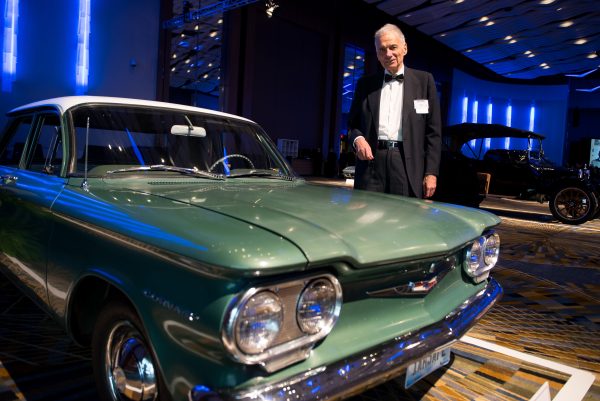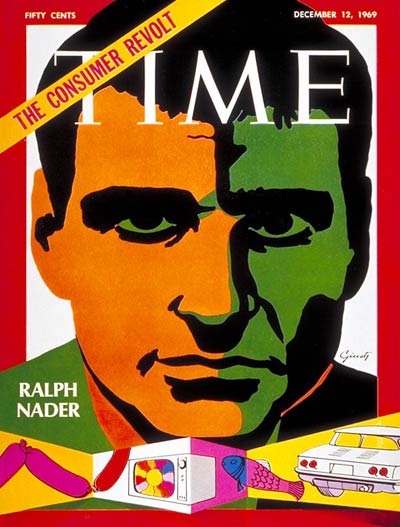Ralph Nader became the face of automotive safety through his 1965 book, Unsafe at Any Speed: The Designed-In Dangers of the American Automobile. The book was a critique of automobile manufacturers and the occupant safety of their vehicles. Nader levied criticisms across the entire industry for vehicle crash-worthiness, the automobile’s effect on air pollution and stubbornness by many manufacturers to introduce new safety features that might compromise style. The book took particular aim at Chevrolet’s Corvair, a rear-engine mid-size sedan, whose tricky handling had resulted in numerous crashes and over 100 lawsuits against General Motors.
Some automakers attempted to downplay Nader’s claims, but in spite of the blockades, he pressed on with his agenda. By the spring of 1966, Unsafe at Any Speed was a best seller in nonfiction. The publicity Nader’s book generated for automotive safety prompted legislation to create the National Highway Traffic Safety Administration (NHTSA), an agency devoted to saving lives by reducing the number and severity of vehicle-related crashes. That legislation also mandated a number of safety improvements to automobiles, such as seat belts and collapsible steering columns, and setting a precedent for ongoing government mandates of vehicle safety standards which continues today. The existence of NHTSA has contributed to a steady decline in traffic-related deaths since their peak in 1972, even as the number of vehicles on the road continues to grow.
Though many did not like what Nader had to say, even his most ardent critics have acknowledged that Nader and his book had an important role in promoting vehicle safety. “I didn’t like the book”, said 2013 Hall of Fame Inductee Robert Lutz in a New York Times interview, “but there was definitely a role for government in automotive safety.” That Nader’s name still draws some ire among certain car enthusiasts highlights how significant his influence was on the automotive industry.


















